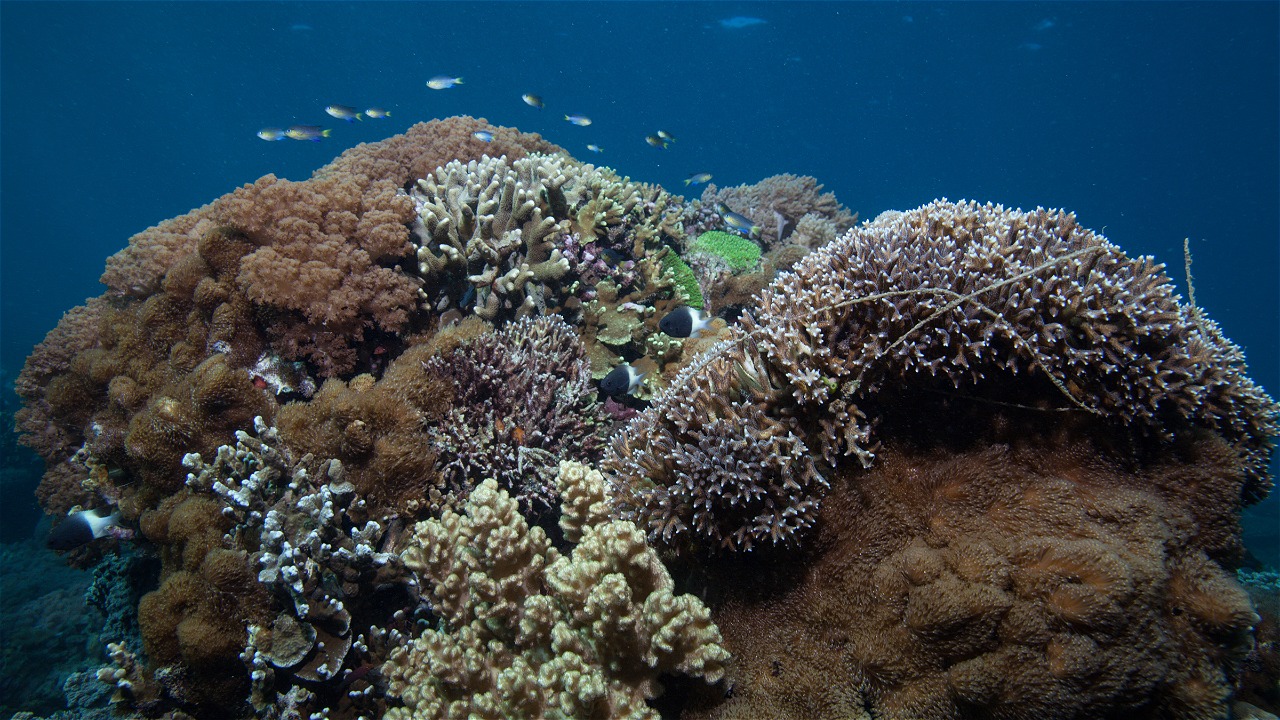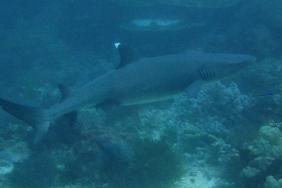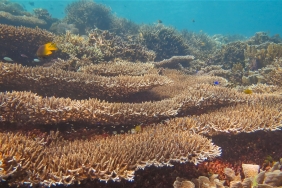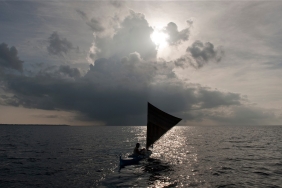CORAL-EATING STARFISH PHENOMENON
By: Taufik Abdillah (WWF-Indonesia)
On the third day of #XPDCSULTRA, I took team A to dive the east coast of Bahubulu Island. We hoped that this morning's dive would have good visibility compared to the second day, when all three dive sites were shrouded in turbidity with less than 10 meters of visibility.
The fish team (Putu Suastawa/BTNW and Kartika Simolang/WWF-Indonesia) and roll master (Anung Wijaya/DKP-Sultra) descended into the water first. They were followed by me, Angga (rugosity observer) and Irwan Hermawan (photographer).
Our wish that day came true. Luckily, we had good waters with visibility reaching 15-20 meters. However, after looking more clearly into the bottom of the water, the coral reefs in this location are bleached. I thought that the process of mass bleaching had passed its time until last May, but it was still happening at this location.
Arriving at a depth of 10 meters, the bleached corals such as Acropora branching (Acropora branching), Acropora table (Acropora tabulate) were more clearly visible, (coral branching), sheet corals (coral foliose), massive corals (coral massive) and submassive, coral encrusting, and mushroom.
Apparently, this phenomenon is caused by a common coral predator in tropical waters, the CoTS (Crown-of-Thorns Starfish) with the scientific name Acanthaster planci,or commonly called the crown-of-thorns starfish.
Acanthaster planci belongs to the class Astreoidea or starfish. It is one of the largest starfish in its class, and has spines all over its body. They live throughout waters that have coral reef ecosystems, especially in reef sites that have high coral cover, because CoTS are active coral predators that can cause corals to bleach and then die.
If Acanthaster planci has a high enough density in the coral reef ecosystem, the impact will be negative. According to Endean (1987), Acanthaster planci provides a negative impact on coral reefs if the population density has reached 14 individuals/1000 m2.
Pak Putu, during his dive, was curious about the number of CoTS in this location. He tried to stop around the 3rd transect, or 150 meters from the starting point of the dive. He started counting CoTS at that one point, and got a total of 20 CoTS individuals gathered close together. In keeping with its common nature, the distribution pattern of Acanthaster planci is in groups as these animals prefer to feed in groups.
The large number of Acanthaster planci found in this location may be due to the decline or absence of predators of this animal in the location. Predators of crown-of-thorns starfish include Napoleon fish (Chailinus undulates) and Triton (Charonia tritonis).
If the number of Acanthaster planci is large in a certain location, in order to protect the coral reefs, it is possible to remove these animals to land and then burn them. However, try not to lift all CoTS up. Because, CoTS also has an important role in the coral reef ecosystem if the density is low or normal.
One of the roles of CoTS is to balance out faster growing coral species such as Acropora corals. This can make room for slower growing massive corals, which in normal populations can maintain coral reef diversity.





